Story by Donald H. Harrison; Photos by Shor Masori

LA JOLLA, California – The Six Million Jews murdered in the Holocaust, along with five million other people deemed undesirable by the Nazis, are so hard to conceptualize. Artists and teachers have struggled to represent the Six Million in concrete terms; for example, Six Million tiny squares; Six Million Paper Clips; and in abstract terms, for example, as six pillars, each gruesomely cut off from their natural height.
The annual Holocaust Commemoration held Sunday, May 1, at the Lawrence Family Jewish Community Center made use of three important symbols: Yahrzeit candles, stones, and ceramic butterflies.
The Yahrzeit Candles routinely are lit by Holocaust Survivors in memory of those who perished in the camps, or in transit, or in hiding, or by brutal executions in town squares, or by being burned to death in their synagogues set on fire, or by any other means conjured in the cruel imagination of the German Nazis and their allies.
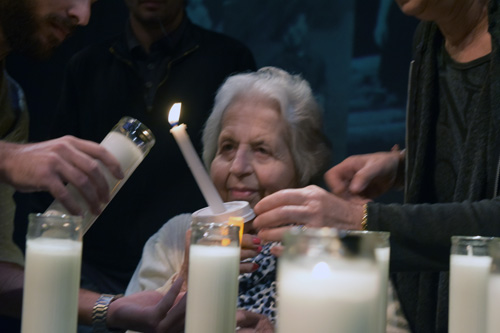
On Sunday, one after another, the survivors—often accompanied by members of their families – were called to a table at the front of the David and Dorothea Garfield Theatre at the Lawrence Family JCC, and there illuminated the yahrzeit candles awaiting them. This ceremony is a succession of solemn, emotional moments, made all the more poignant this year by two gay men, Bill Jefferson and Kevin Nili, who lit a candle in memory of the homosexuals who were hounded to death by the Nazi regime.
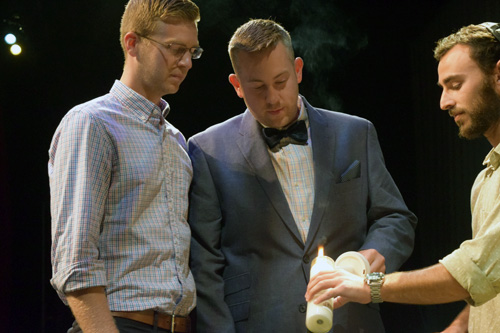
When Jews visit graves in a cemetery, they typically leave rocks atop the headstone to signify that they were there to visit. Because many Holocaust victims were gassed and cremated, with their ashes plowed unceremoniously into fields, there is no specific cemetery at which friends or relatives can go to so mourn. So at the Holocaust Memorial Garden, in front of the JCC, many of the Survivors who eventually settled in San Diego have the names of their loved ones engraved on a high wall. Stones were distributed at the end of the memorial service for attendees to place in the garden.
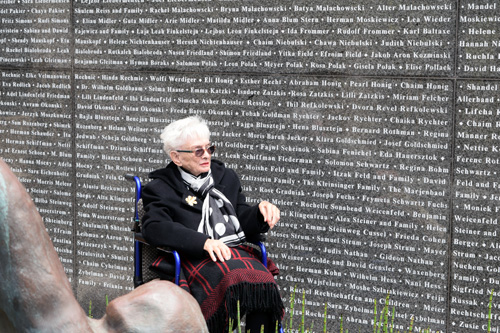
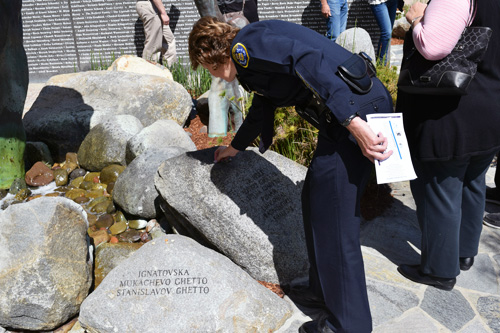
The main part of Sunday’s service was occupied with ceramic butterflies symbolizing the 1.5 million children who were among the 6 million murdered. Jan Landau, an educator at the San Diego Jewish Academy, is credited with coming up with the idea; and artist Cheryl Rattner Price with actualizing through the creation of ceramic butterflies that after being fired can be painted in any pattern that children or adults deem appropriate.
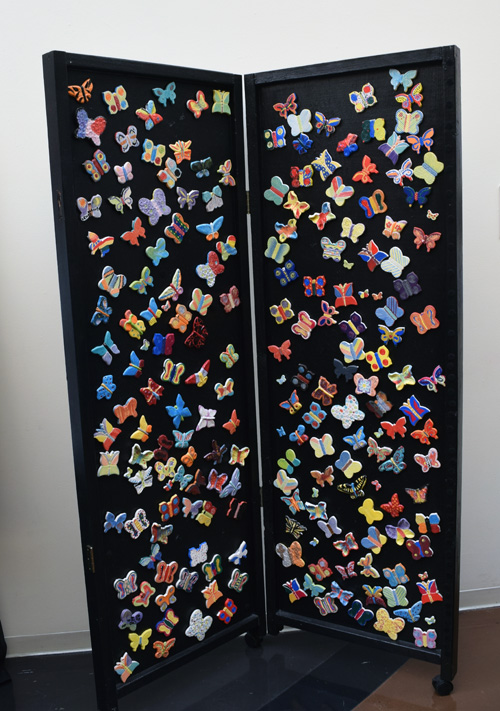
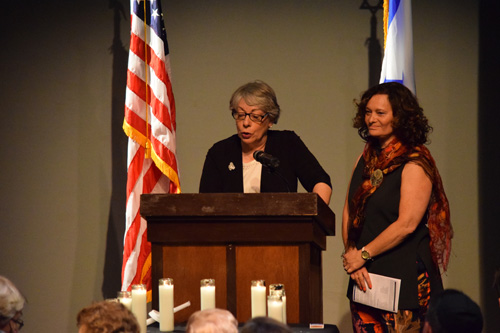
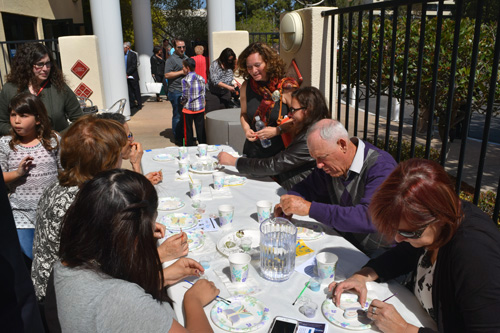
The result has been a flood of butterfly designs – more varied than even Mother Nature’s—and the ceramics being affixed to walls at both Jewish and secular schools, as well as at other institutions of teaching and tolerance throughout the United States and in various venues throughout the world.
Landau and Rattner Price appeared together on the stage to discuss how the project developed over the last decade, and also previewed a movie that will be premiered on Tuesday at the Museum of Tolerance entitled Not The Last Butterfly.
The butterfly motif has its origins at the Terezin Ghetto and Concentration Camp, known in German as Theresienstadt, where Pavel Friedmann wrote a poem in 1942, sometime before being sent to his death by the Nazis. The commemoration officially began with Gabrielle Smotrich reading Friedmann’s poem.
The last, the very last,
So Richly, brightly, dazzlingly yellow.
Perhaps if the sun’s tears would sing
against a white stone…
Such, such a yellow
is carried lightly ‘way up high.
It went away I’m sure because it wished to
kiss the world goodbye.
For seven weeks I’ve lived in here
Penned up inside this ghetto
But I have found my people here.
The dandelions call to me
And the white chestnut candles in the court.
Only I never saw another butterfly.
That butterfly was the last one.
Butterflies don’t live in here
in the ghetto.
The poem was followed by a color guard from the Marine Corps Recruit Depot consisting of Corporal Ford, Sergeant Rogas, Sgt. Fernandez and Lance Corporal McElveen, who were invited to present the colors by Jack Morgenstern, the son of Survivor Gussie Zaks, who came in a wheelchair from Seacrest Retirement Village where she now resides.
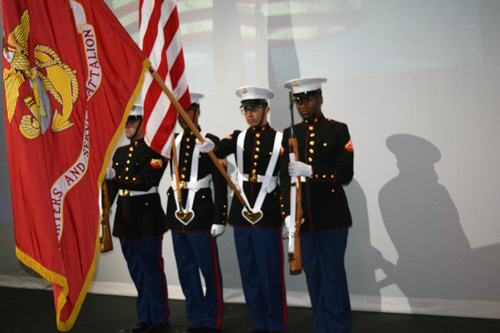
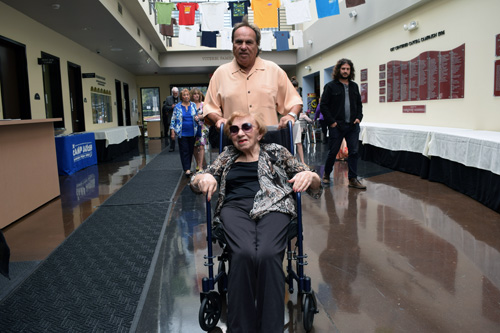
After Ariel Smotrich sang the National Anthem, Eileen Wingard, a former violinist for the San Diego Symphony (and a music columnist for San Diego Jewish World) performed “Raisins and Almonds” with her daughter, violinist Myla Wingard. They dedicated the song to the late Eve Gerstle, a centenarian, who was among the inmates who had performed at Terezin.
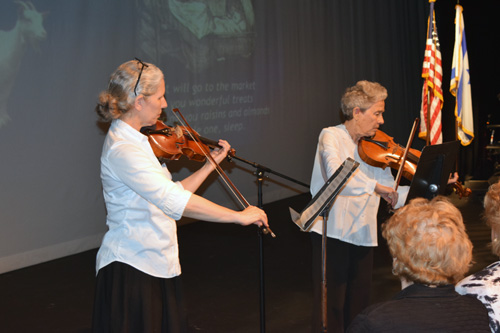
Rose Schindler, president of the New Life Club, welcomed the audience estimated at over 500, and Vera Lorell called up Survivors for candle illumination. Schindler’s grandson, Alex, lit the shamash (or helper candle), and the following survivors illuminated six of them: Mike and Manya Wallenfels; Herman and Edith Polak; Maurice Rubinstein; Ruth Sax; Agathe Ehrenfried; and Morey Klein with Faye Schwarz. Another candle was lit for San Diego County’s Survivors who had died in the preceding year, including not only Gurstle but also Agnes Arnsdorf, Jack Beim, Lou Dunst, Lori Einhorn, David Faber, Mikhail Firshteyn, David Flaum,Sam Gelbart, Hedvig Gellert, Ernst Herzberg, Elizabeth Ozer, Dvora Rogoway, Anneliese Terry, Manya Teplitsky, Isaac Winterman and Basya Zeltser.
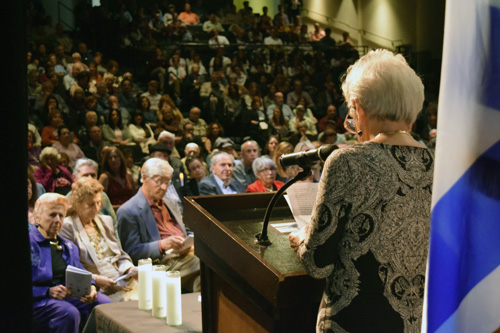
Yet another candle was lit by children, grandchildren and great-grandchildren of the Survivors, respectively known as representatives of the 2nd, 3rd and 4th generations. This multigenerational group included: San and Jan Landau; Naomi Shakhman, Aaron, Eli and Michael Shakhman; and Sophia and Noah Landau.
After this ceremony, Morris Schwartz sang the Partisan Song in Yiddish, and Ariel and Gabrielle Smotrich joined by Shayna Meltzer read quotations from Survivors about their lives and hopes.
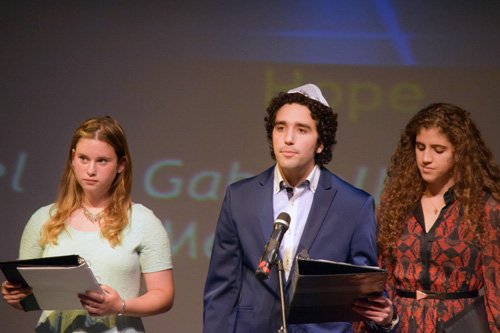
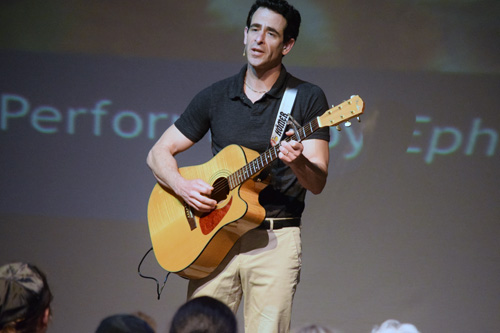
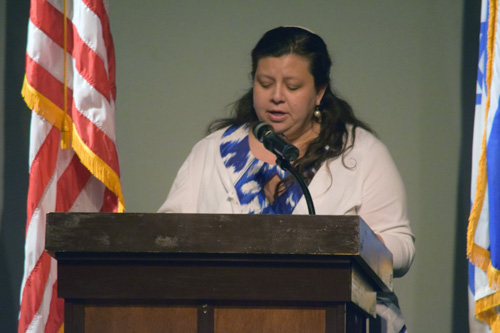
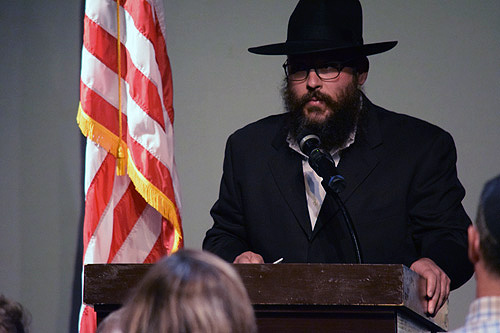
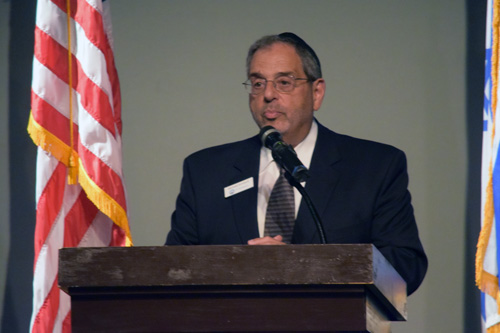
Then Ephron Rosenzweig led the audience in the folk song “Dona Dona;” Rabbi Devorah Marcus of Temple Emanu-El led a brief prayer service; Rabbi Baruch Shalom Ezagui of Chabad of La Jolla chanted El Moleh Rachamim; David Mizrahi recited Kaddish, and Michael S. Sonduck, president and CEO of the Jewish Federation of San Diego, told of Federation’s commitment to always remembering the Holocaust. The program ended with Ariel and Gabrielle Smotrich with Shayna Meltzer singing the Israeli National Anthem, HaTikvah.
*
Harrison is editor of San Diego Jewish World. Masori is a staff photographer. Comments intended for publication in this space must be accompanied by the letter writer’s first and last name and by his/her city and state of residence (city and country for those outside the United States.)
Don described this impressive program, capturing its essence and setting it in the broadest context.
As always, his experienced professionalism is evident. He included all the details as well as
painting the larger picture. May we continue partaking of his excellent journalism in our San Diego Jewish Community for many more years to come.
–Eileen Wingard, San Diego